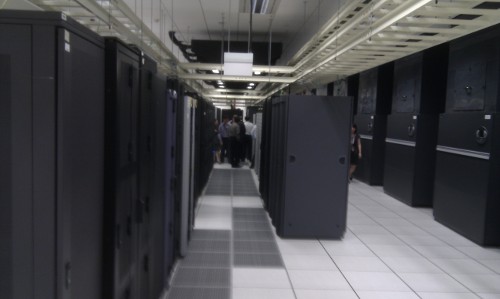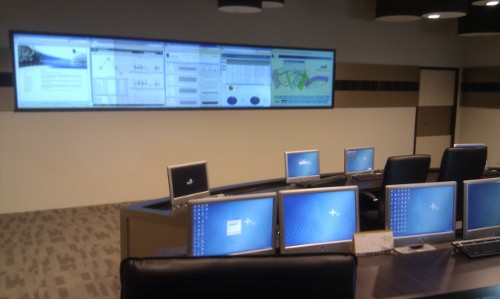
A*CRC’s secret lab, where a crazed AI is poised to take over the world. No, wait, it’s just the server room.
Techgoondu had the chance last Tuesday to visit A*Star’s Computational Resource Centre (A*CRC), the largest high performance computing centre in Singapore. The centre, run by the Agency for Science Technology and Research (A*Star), a government body dedicated to fostering research initiatives, is meant to provide compute resources for researchers locally.
Running various machines that give around 75 T-FLOPs delivered by 7,500 core processors, ACRC has about 700 users who use its resources. A*CRC is within the top 500 compute centres in the world, and machines housed at the centre are some of the fastest in SE Asia.
With the user base expected to grow 45 per cent annually, ACRC spent millions of dollars on acquiring new capability in recent years. For example, they almost doubled their T-FLOP capacity — from about 40 T-FLOPs to 75 T-FLOPs — with the addition of two machines, Aurora (by SGI) and Fuji (by Fujitsu) in this year alone. And even this is not enough.
Dr Marek Michalewicz, director of A*CRC will be buying even more compute power to boost their computer power to 100 T-FLOPs by early 2011.
“There is an insatiable need for high performance centres and compute power in this part of the world,” he said.
All these compute resources are used to crunch massive amounts of data, typically in the petabyte range. Some examples given include visualizing MRI data for patients, solving hard problems in fluid dynamics for engineering, and simulation of protein and molecule movement for drug research.
A*CRC is not a profit making organization, and resources are typically distributed on a first-come-first-serve basis to users, most of whom are government researchers. On top of this, A*CRC occasionally does collaboration and joint research work with MNCs.
Besides A*CRC, there are other compute centres in Singapore, like the ones in local universities NTU and NUS.

A*CRC’s network operation command centre, where bored engineers play Starcraft 2 on the huge screens. No lah, they do boring work like monitor the performance of the machines




